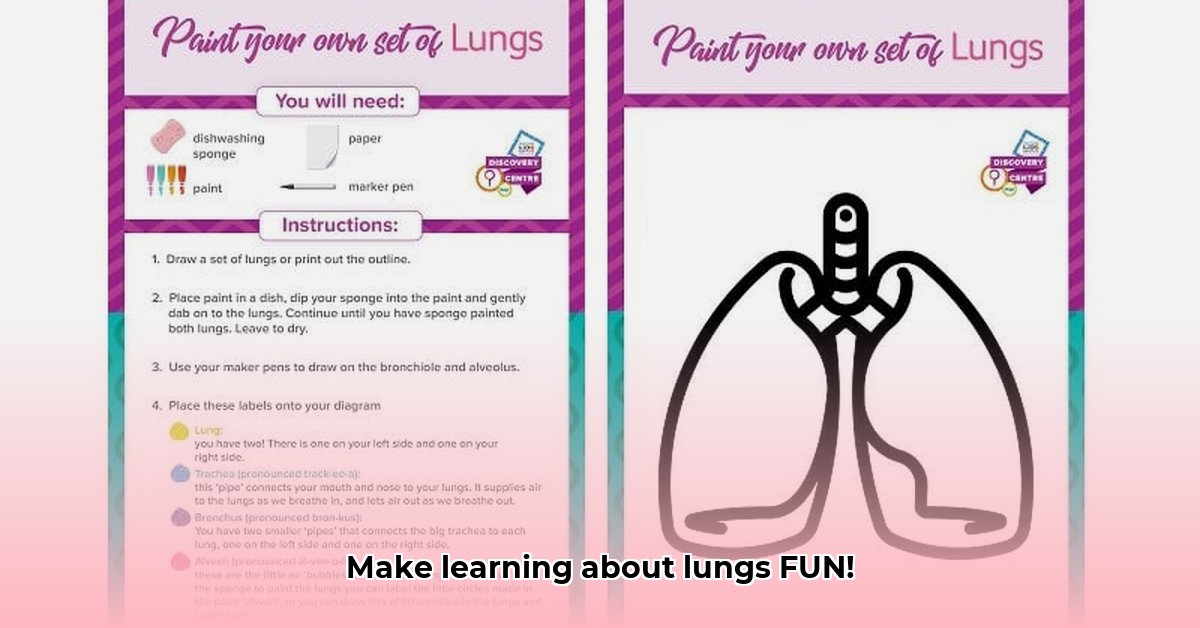
Learning about the respiratory system doesn't have to be a chore! Transforming this often-dry topic into an engaging adventure is easier than you might think, thanks to the power of games. This guide provides a curated list of respiratory system games for kids of all ages, along with practical tips to maximize their educational impact in home or classroom settings. For younger learners, try this interactive labeling game.
Why Games Are a Breath of Fresh Air for Learning About Breathing
Games aren't just fun; they're powerful learning tools. They make learning about the respiratory system—how we breathe—more interactive and memorable. Wouldn't your child rather explore the workings of their lungs through a vibrant game than read a textbook? Studies show that game-based learning boosts engagement and knowledge retention.
The Power of Playful Learning: Key Benefits
Games excel at teaching in several key ways:
Visual Learning: Colorful visuals and animations bring the abstract concepts of the respiratory system to life, making them easier to grasp. Seeing the lungs expand and contract in a game is far more impactful than simply reading about it. Isn't visualization key to understanding complex processes?
Active Participation: Unlike passive learning, games demand active participation. Whether it's clicking, dragging, solving, or answering questions, this active involvement boosts memory and understanding. How much more likely are kids to recall information they've actively used?
Repetition and Reinforcement: Games often involve revisiting key concepts, reinforcing learning through repeated exposure and practice. This builds confidence and ensures deeper understanding. How many times do you need to see something to remember it?
The Fun Factor: Let's be honest–fun makes learning stick! Games transform a potentially boring topic into an enjoyable challenge. What makes education more effective: enjoyment or obligation?
Awesome Respiratory System Games for Kids of All Ages
This curated selection of games is categorized by age group to ensure the perfect fit:
Preschool Adventures (Ages 3-5)
Young children thrive on simple, visually appealing games. Look for interactive labeling games where they can drag and drop labels onto parts of the respiratory system (like lungs, trachea, and bronchi). Bright colors, clear instructions, and cute characters make learning fun! Printable worksheets offer a screen-free alternative.
Elementary School Explorations (Ages 6-12)
Elementary schoolers are ready for slightly more challenging games. Interactive quizzes, puzzles, and simple simulations introduce more complex concepts in a playful manner. Websites and apps offer a wealth of free and paid options. How much interactive content enhances learning at this age?
Middle School Investigations (Ages 12-14)
Older children are ready for in-depth learning. Advanced online simulations allow for a virtual exploration of the respiratory system, revealing the mechanics of breathing and even exploring simplified scenarios like an asthma attack. What level of detail is appropriate for this age group?
| Game/Platform | Age Range | Game Type | Cost | Pros | Cons |
|---|---|---|---|---|---|
| Educational Websites | 3-12 | Labeling, Quizzes, Puzzles | Free (often) / Paid | Wide variety, often free introductory levels, easily accessible | Quality can vary; free versions may be limited; some require subscriptions |
| Educational Apps | 6-14 | Simulations, Games | Free (often) / Paid | Interactive, engaging, can adapt to different learning styles | Some may have in-app purchases; may require internet access |
| Printable Worksheets | 3-10 | Coloring, Matching, etc. | Often free printable | No screen time, inexpensive, customizable, good for hands-on learning | Requires parental involvement in preparation and supervision |
Unlocking the Full Potential of Respiratory System Games: A Step-by-Step Guide
To maximize learning, go beyond simply letting kids play. Follow these steps for effective game integration:
Before you Play: Discuss the respiratory system beforehand. What do they already know? What do they hope to learn? This sets a focused learning goal.
During Game Time: Guide younger children, explaining unfamiliar terms. Encourage older kids to explore independently, checking in periodically.
After the Game: Have a follow-up discussion. Ask about what they learned, what they found interesting or challenging. This reinforces learning and identifies areas needing extra support.
Extend the Learning: Encourage creative extension activities, like building a respiratory system model or drawing diagrams. This hands-on approach solidifies understanding.
Addressing Concerns: Cost and Accessibility
Access to technology isn't universal. If cost is a concern, explore free online options or printable worksheets. Schools can leverage grant funding or shared subscriptions to educational platforms. Ensuring access to quality education for every child is paramount.
The Big Picture: Breathing Easy with Game-Based Learning
Respiratory system games make learning fun and engaging, fostering a love of science and preparing kids for future learning. Let's make science education a joyful journey for every child!